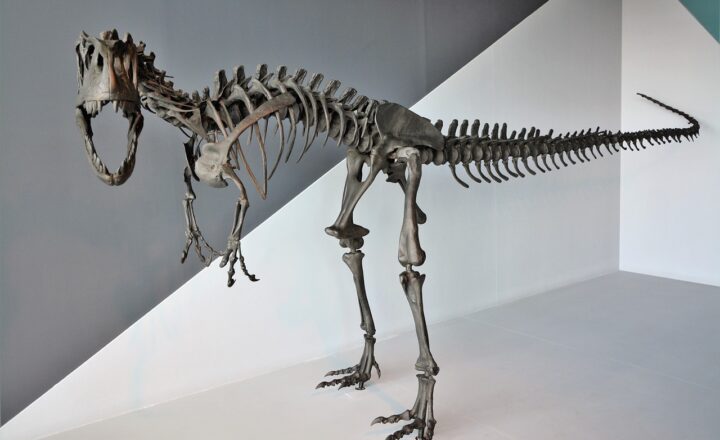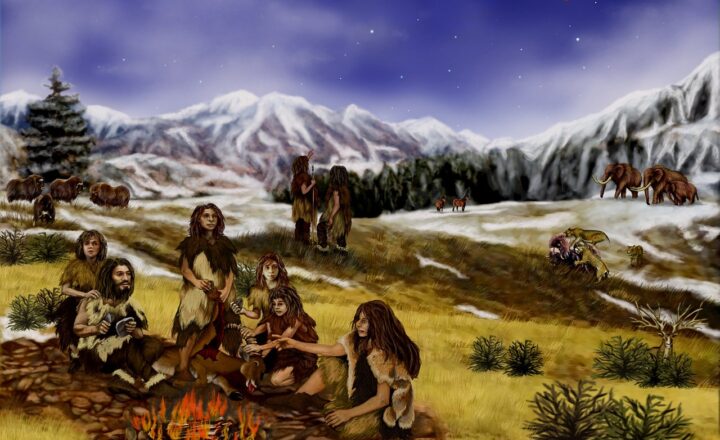Exploring the Cambrian Explosion: When Life First Flourished in Earth’s Oceans
November 14, 2024

The Cambrian Explosion is one of the most intriguing events in the Earth’s history, marking a dramatic period of biological innovation that took place approximately 541 million years ago. During this era, the planet witnessed an unprecedented diversification of life, with organisms evolving rapidly to fill a variety of ecological niches. Let’s delve into this captivating phenomenon, exploring its significance, causes, and lasting impact on the evolution of life.
1. What Was the Cambrian Explosion?
The Cambrian Explosion refers to a relatively short geological period within the Cambrian period, characterized by an astonishing increase in the complexity and variety of life forms. Before this event, life on Earth was predominantly simple, consisting mainly of unicellular organisms. However, during the Cambrian Explosion, multicellular organisms began to flourish, leading to the emergence of most major animal phyla that would dominate the oceans.
It is estimated that within a span of just 20 million years, nearly all of the major groups of animals we are familiar with — such as arthropods, mollusks, and chordates — made their first appearances.
2. The Timeline of the Cambrian Period
The Cambrian period began around 541 million years ago and lasted until approximately 485 million years ago. The actual Cambrian Explosion itself is believed to have occurred during the early Cambrian, roughly between 535 and 520 million years ago. The Cambrian is divided into several stages, namely the Terreneuvian, Series 2, Series 3, and the Series 4.
– Terreneuvian (541 million years ago): This stage witnessed the first appearance of complex multicellular life.
– Series 2 (early Cambrian): Marked by further diversity, particularly among small shelly fossils.
– Series 3 (middle Cambrian): Characterized by the appearance of larger and more diverse life forms, including trilobites and early vertebrates.
– Series 4 (late Cambrian): This period saw the diversification of many animal groups, leading to the establishment of ecosystems that resemble those today.
3. Factors Leading to the Cambrian Explosion
Several scientific theories have been proposed to explain the cause of the Cambrian Explosion. While the exact reasons remain a topic of research and debate, key contributing factors include:
– Environmental Changes: The global environment underwent significant changes, including increased oxygen levels in the oceans, which facilitated the growth and metabolism of larger, more complex organisms.
– Genetic Innovations: The evolution of gene regulatory mechanisms likely played a crucial role in permitting rapid diversification among life forms. The development of the Hox gene complex, a crucial set of genes controlling body plan development, may have provided the basis for the formation of diverse anatomical structures.
– Ecological Interactions: New ecological dynamics emerged as organisms began to interact more complexly with their environments. Predator-prey relationships led to evolutionary pressure to adapt and defend against predation, promoting diversity among species.
– Geological Changes: The movement of tectonic plates during this time resulted in the formation of various habitats, which created ample opportunities for species diversification.
4. Major Organisms of the Cambrian Explosion
During the Cambrian Explosion, an array of remarkable organisms emerged:
– Trilobites: One of the most iconic creatures of the Cambrian period, trilobites were marine arthropods that thrived in the oceans. They had a hard exoskeleton that provided them protection and came in various shapes and sizes.
– Anomalocaridids: Considered one of the top predators of their time, these large, complex creatures had unique features, including large eyes and spiny appendages for capturing prey.
– Early Vertebrates: The Cambrian period saw the emergence of the earliest vertebrates, which would eventually evolve into fish and higher animals.
– Mollusks: Cephalopods, bivalves, and gastropods began to appear during this time, setting the stage for their dominance in marine environments.
These organisms formed complex ecosystems and paved the way for the continuous evolutionary processes that followed.
5. The Impact of the Cambrian Explosion on Evolution
The Cambrian Explosion had a lasting impact on the course of evolution. It established the body plans and habitats that would shape later animal life. The cnidarians, arthropods, and chordates—the three primary lineages of future animal groups—began to differentiate during this period.
Furthermore, the Cambrian Explosion laid the foundation for future ecological systems. Marine ecosystems became more complex, with various niches developing throughout the oceans. This diversity of life forms continues to echo today in both terrestrial and marine environments.
Recent studies analyzing fossil records and genetic data also provide invaluable insights into the evolutionary relationships among these Cambrian organisms, highlighting the evolutionary significance and interconnectedness of all life forms.
6. Ongoing Research and Discoveries
Research on the Cambrian Explosion continues to uncover groundbreaking discoveries. Paleontologists are constantly analyzing fossils and ancient seabeds for information about these ancient ecosystems, leading to a better understanding of how life evolved.
New techniques like advanced imaging and genomic analyses provide further insights into the biology and evolution of Cambrian organisms, revealing their roles in shaping modern biodiversity.
One noteworthy discovery in recent years includes the fossilized embryos of ancient animals, offering clues about early development and the relationships between different species. As technology advances, our understanding of this fascinating period in Earth’s history will continue to evolve.
Conclusion
The Cambrian Explosion stands as a monumental milestone in the history of life on Earth. This era, characterized by rapid diversification and innovation, has shaped the foundations of modern biodiversity. The study of the Cambrian period not only enhances our understanding of evolutionary processes but also provides valuable insights into the interconnectedness of life that continues to resonate today. As we explore the depths of Earth’s oceans and uncover the mysteries of the Cambrian period, we are reminded of the profound transformations that have occurred throughout our planet’s history, highlighting both the fragility and resilience of life.
Whether you are a passionate paleontologist or simply curious about the world around you, the Cambrian Explosion offers a window into the rich tapestry of life that has unfolded over millions of years, inspiring awe and appreciation for the diversity surrounding us today.







